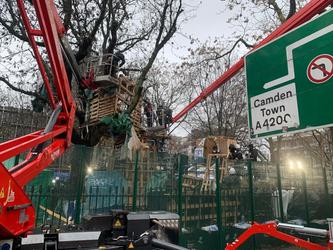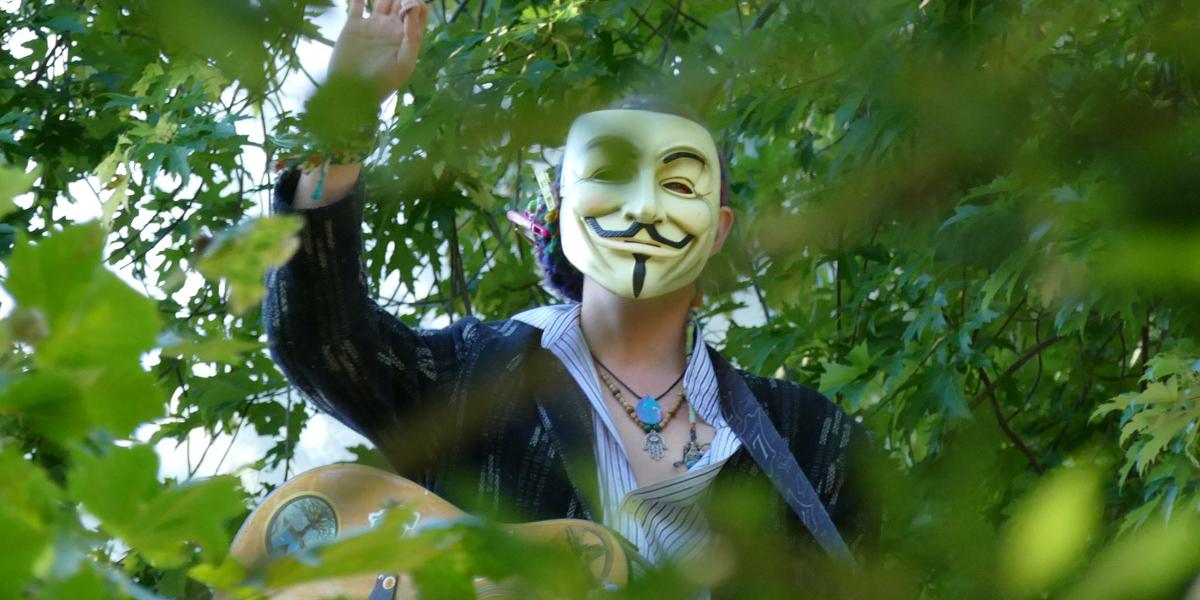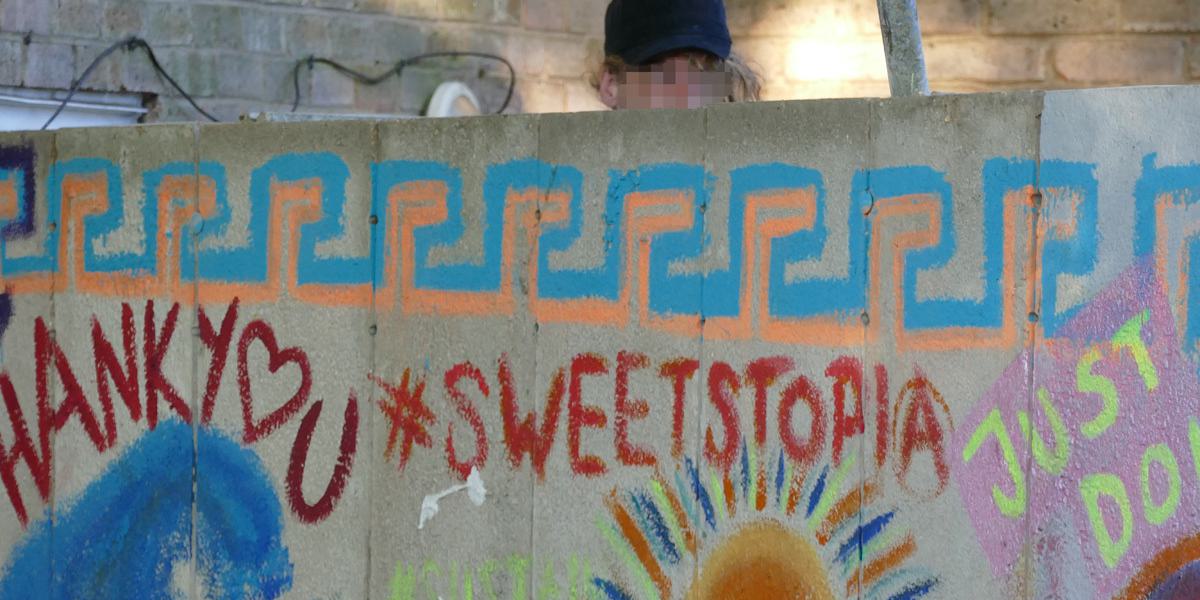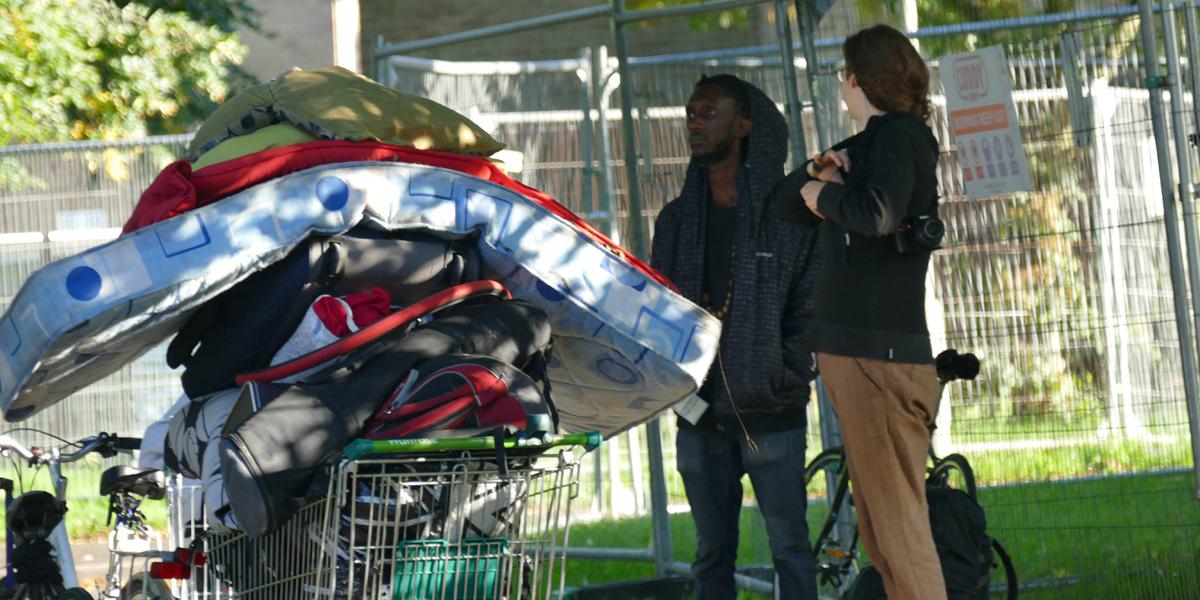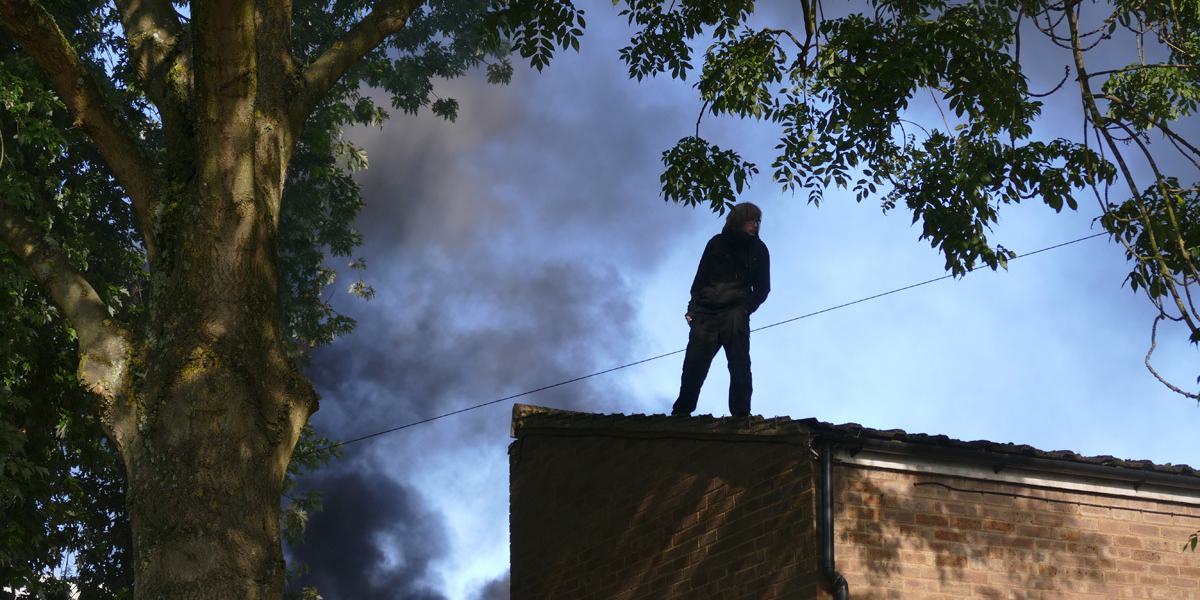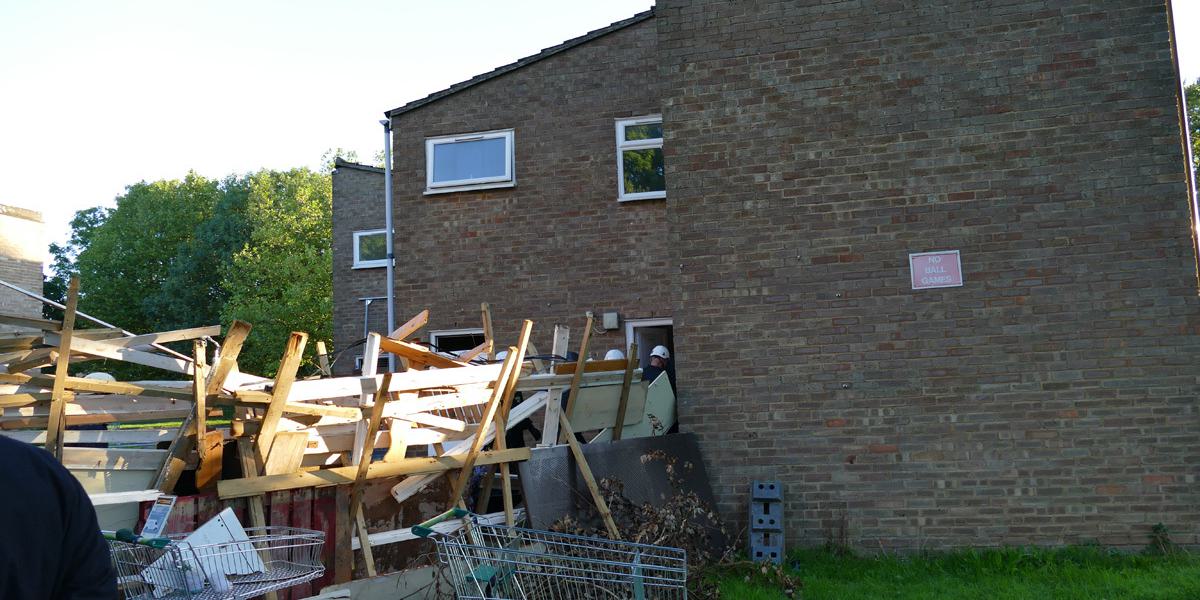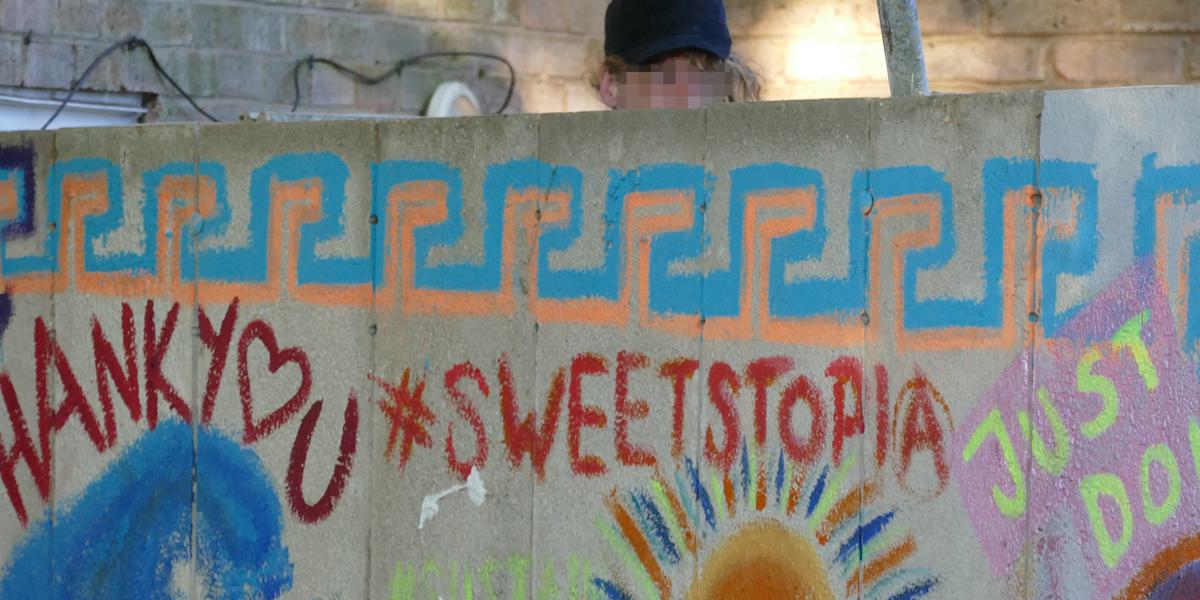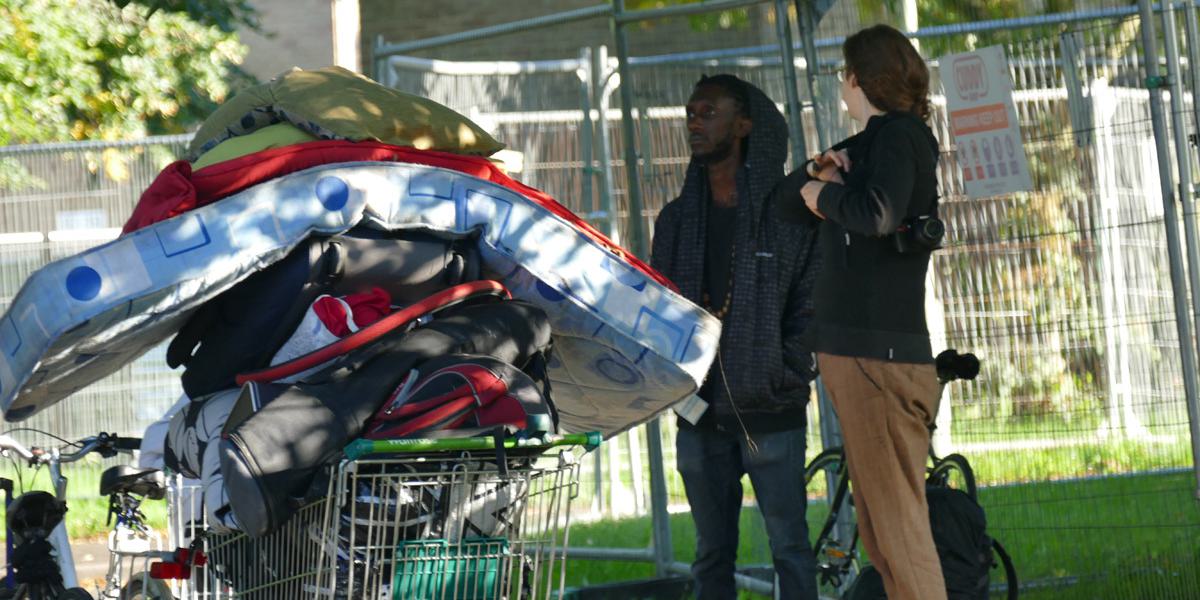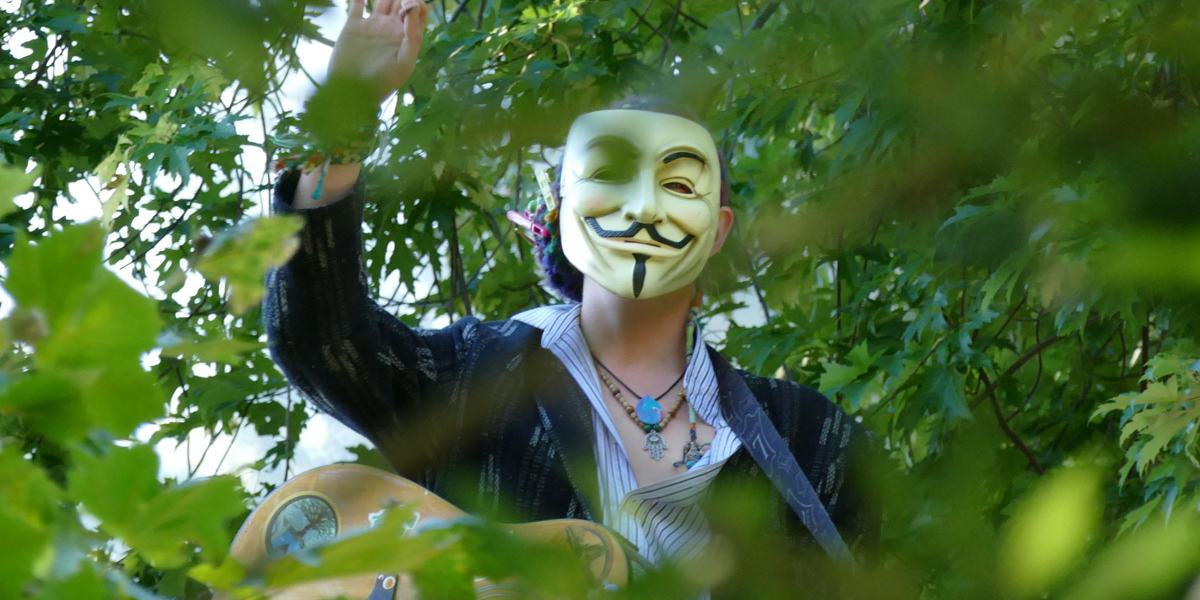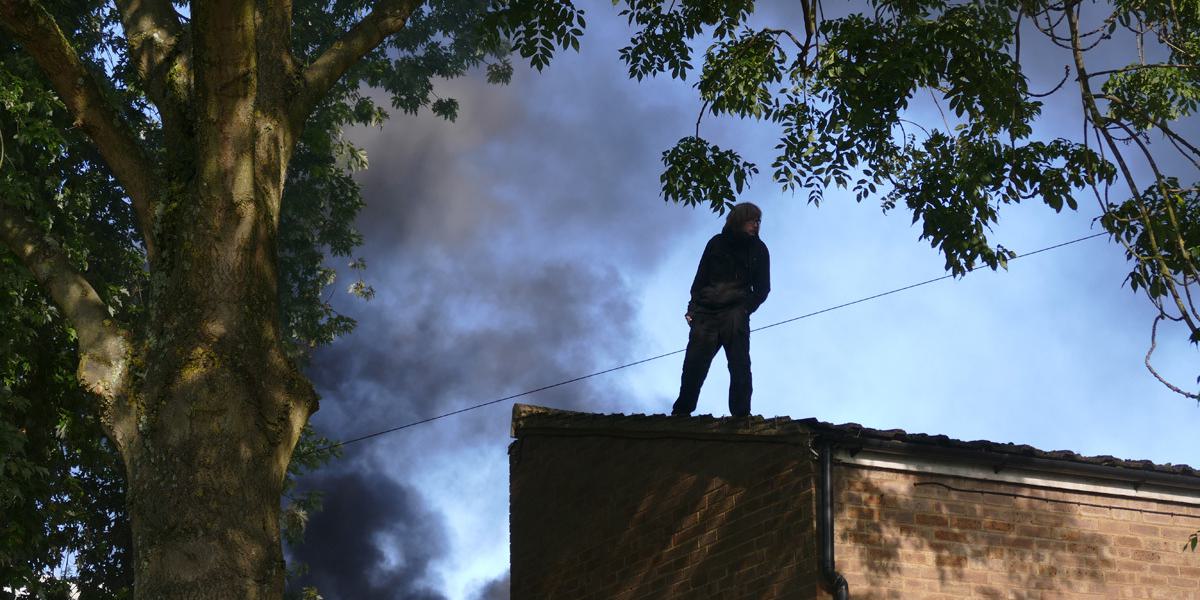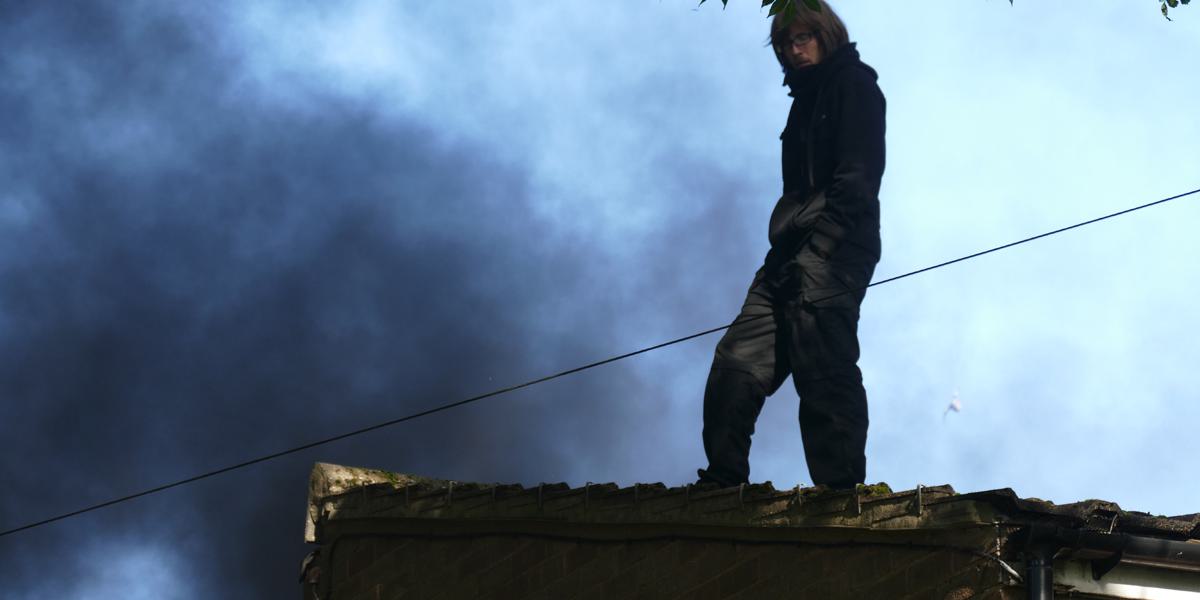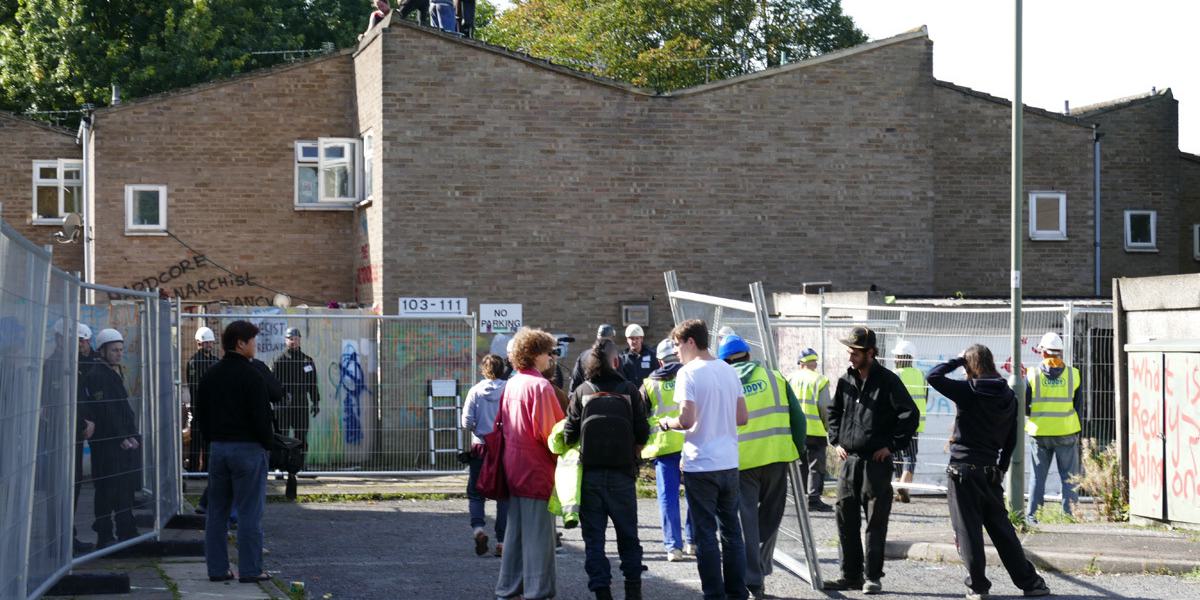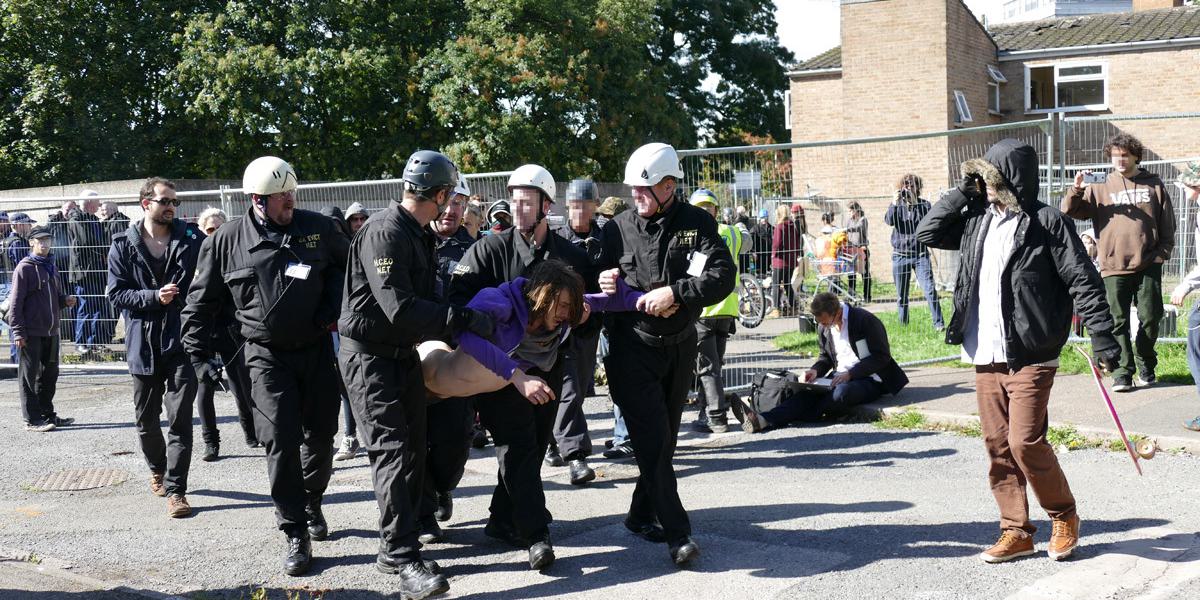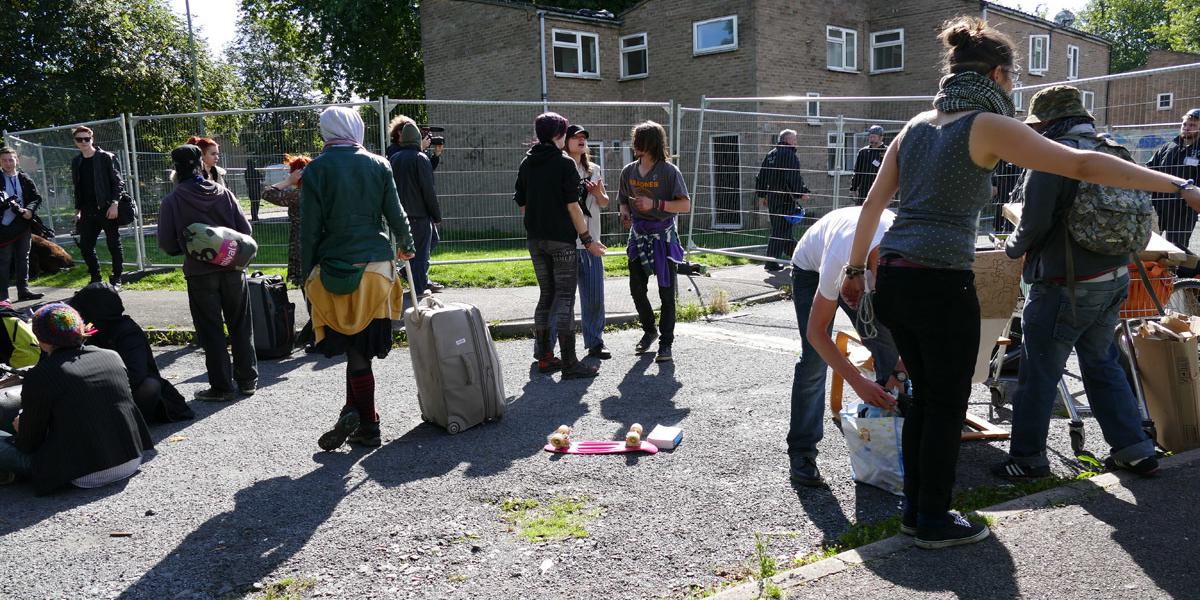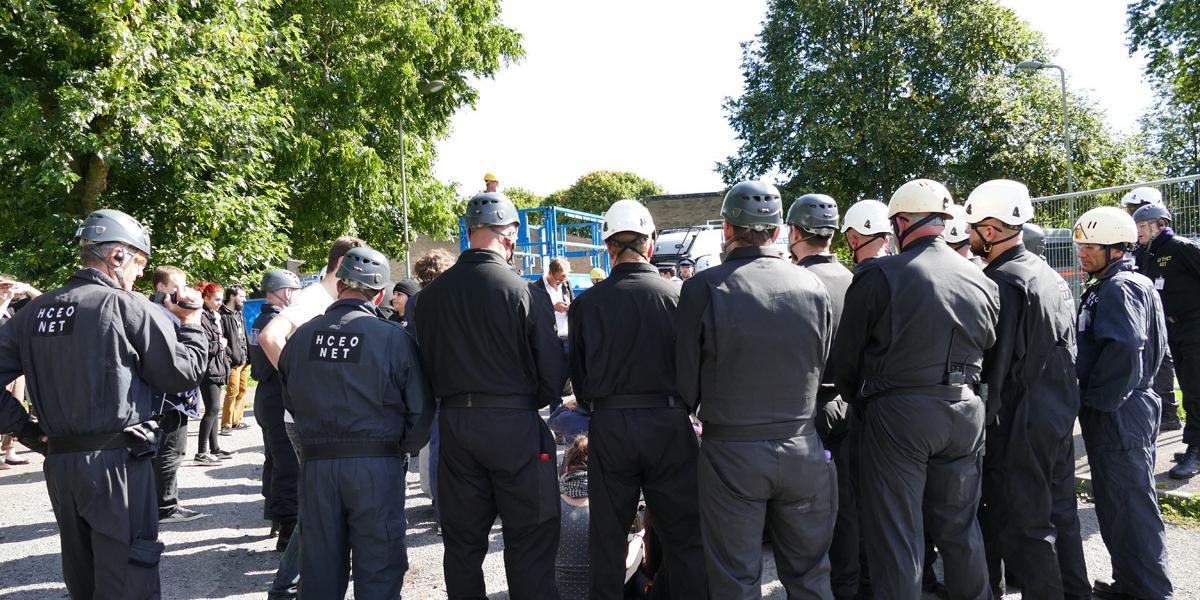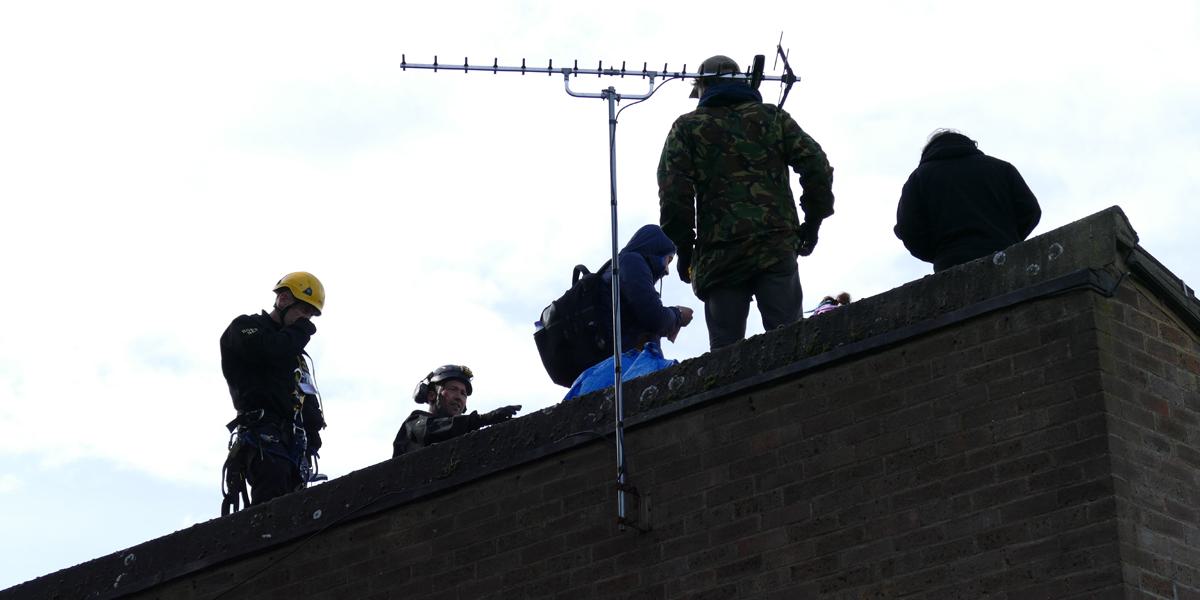Sweets Way, London
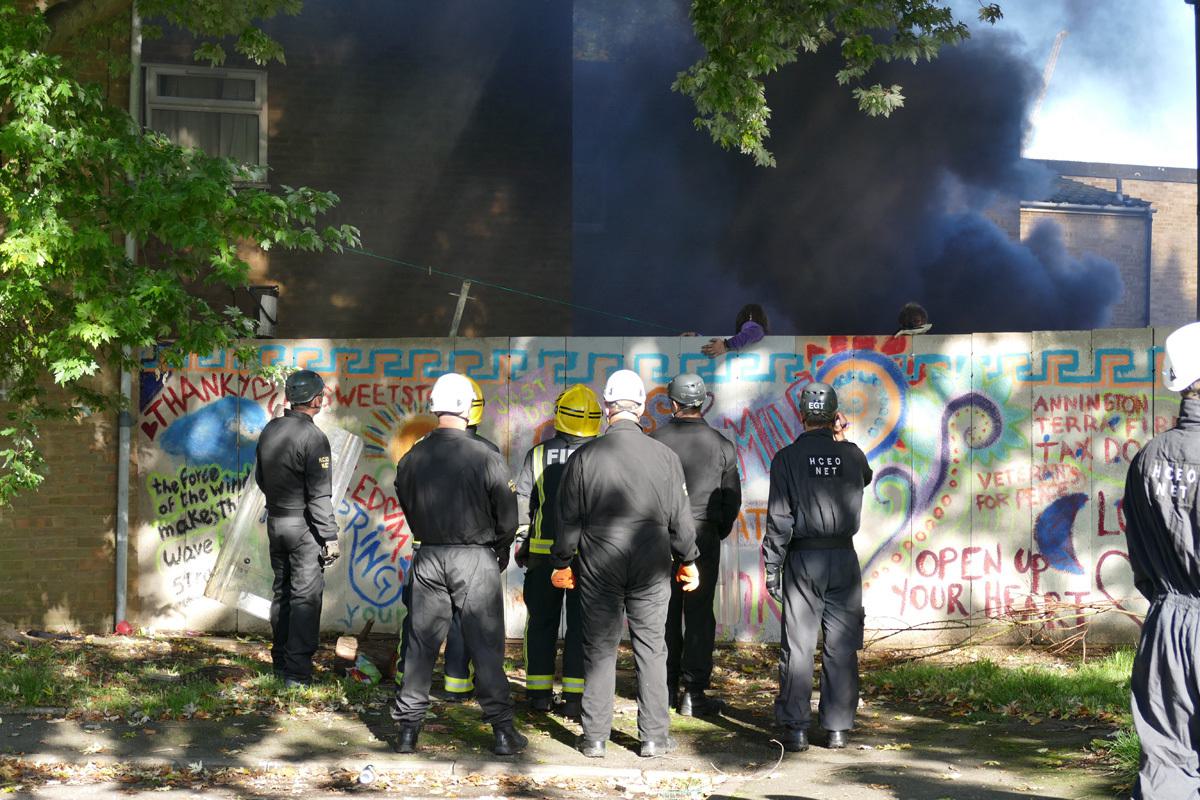
This former Ministry of Defence housing in north London had been purchased by Annington Property, who then allowed Barnet Council to temporarily accommodate people there before redevelopment of the site to build 282 new properties.
The growth of the protest
In early 2015, the residents of the 142 homes were given notice to leave. In March that year, the estate was occupied by housing activists, including members of anti-capitalist groups Occupy and Anonymous, as well as European migrant workers and their families and one remaining ex-resident in a wheelchair who didn’t want to be moved on, even though he had already been offered alternative accommodation by the council.
This led to a 200-person protest and Russell Brand got involved, which brought the protest, now focusing on the lack of affordable housing, to national attention.
On 24th September 2015, the Guardian reported that former residents and neighbours were complaining over how the protest had evolved over the summer to become less peaceful, with squatters, who had no previous links to Sweets Way, being drunk and daubing expletive-laden graffiti on walls.
Pre-existing security concerns
The existing security on the site had been unable to prevent the extension of the squat. Originally, only 20 houses were occupied but by the time we brought in, 75 houses had been taken over.
The squatters were gaining access by popping the locks on the shutters, which were weak and inadequate, and all the properties still had water and heating, making them more pleasant to occupy. The security team on site had been unable to prevent the expansion.
Brief to National Eviction Team
Our original remit was to conduct the eviction under a High Court writ, but while we were planning the eviction, we were instructed to stop the expansion of the squat before undertaking the eviction.
It was a challenging task, but we did gain control of the site and then conducted the eviction. During the eviction, squatters climbed onto the roof tops, so we had cherry pickers and climbers on site to bring them down safely, despite active resistance.
During our time on site, our enforcement agents had to put up with death threats, threats that their partners would be raped and violence from the protesters.
Supporting the wider community
We worked very closely with the police and Barnet Council on the planning and execution of the eviction, as there were knock-on implications for the wider community.
There were public footpaths through the site, a primary school nearby, as well as several highways which made this a very complex case.
We liaised closely with the head teacher of the primary school about access, which would normally have been across the site, to ensure that pupils, parents and teachers could go to and from school safely using alternative routes.
We also helped to educate dog walkers about going onto the site. We did have permission to stop them, but we mainly tried to dissuade them from walking there and the Council was able to change the footpaths.
The expansion to an adjoining site
After Sweets Way was cleared, the squatters moved into some Ministry of Defence owned houses nearby. The MoD instructed us to remove them under a new High Court writ of possession and, in so doing, we became an approved contractor to the MoD.
BBC news report
You can see the barricades, graffiti and roof top protests in this BBC report on the removal of the final resident in September 2015.
